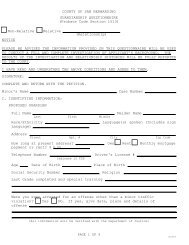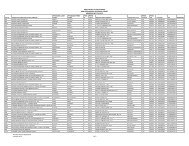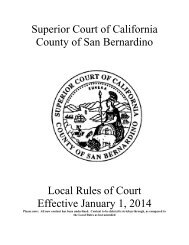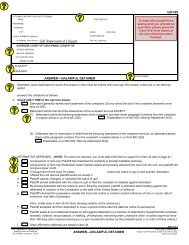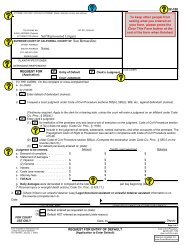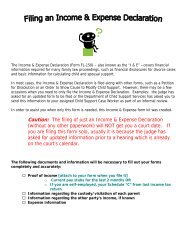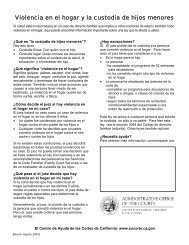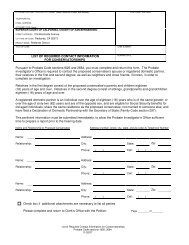FINAL REPORT - San Bernardino Superior Court
FINAL REPORT - San Bernardino Superior Court
FINAL REPORT - San Bernardino Superior Court
You also want an ePaper? Increase the reach of your titles
YUMPU automatically turns print PDFs into web optimized ePapers that Google loves.
Section 3: Power Plant Developments<br />
2. Reimbursement costs for “reasonable and necessary travel” (excluding travel to or from<br />
meetings in Victorville with City officials and staff).<br />
3. Reimbursement for other “out-of-pocket” expenses incurred by Inland Energy in<br />
performing the services, including subcontracted services. Although the contract<br />
excludes legal services from reimbursement, a preliminary budget provided by Inland<br />
Energy estimates that $725,000 will be needed for legal services.<br />
4. A 10% premium on all reimbursable costs. This fee is presumably to compensate Inland<br />
Energy for time spent on (1) administrative matters, including negotiating and<br />
administering contracts of subcontractors; (2) billing or reviewing the invoices of<br />
subcontractors; and, (3) administering accountancy requirements associated with<br />
subcontractor matters. 3<br />
Project Operating Profit<br />
In addition to the conventional compensation structure established by the monthly management<br />
fee clause, the development agreement contains an “Additional Compensation” clause that<br />
provides Inland Energy with the “right to receive five percent (5%) of ‘Project Operating<br />
Profit.’” The contract states that Inland Energy is entitled to this portion of the profit from the<br />
plant in “recognition of the unique value of the experience and expertise which Inland [Energy]<br />
commits to the performance of [development] services.”<br />
The additional compensation clause in the development agreement provides a much larger and<br />
more sustained form of compensation to Inland Energy than the monthly management fee and<br />
yet is only loosely tied to the consultant services provided by the company. In fact, the<br />
company’s 2008 projections for the operational expenses of the 500 megawatt plant, includes<br />
this compensation, which was estimated to be $4.5 million per year by Grand Jury sources.<br />
Further, the development agreement contains no clauses to limit this compensation to a defined<br />
period of time (e.g. two years) or a capped amount (e.g. $10 million). Assuming that the plant<br />
was built and then operated for 30 years, Inland Energy would be entitled to compensation of<br />
approximately $135 million over the life of the plant (without adjusting for inflation). Under this<br />
scenario, Inland Energy would be compensated with an additional $135 million over 30 years for<br />
what was estimated in the agreement as 24 months of design, development, and permitting work.<br />
Little Precedent to Support Project Operating Profit Clause<br />
There is little precedent to support the five percent (5%) of Project Operating Profit included in<br />
the development agreement. No other City or SCLAA contract includes such a clause. Further, at<br />
the time the contract was considered, City officials knew of no other similar public contract that<br />
provided five percent of operating profit for development and permitting work.<br />
3 We have assumed that the 10 percent fee would cover these administrative costs, since the contract specifically<br />
states that the 10% fee may be charged provided that the labor covered by the hourly fees does not include<br />
administrative tasks.<br />
3-8<br />
Harvey M. Rose Associates, LLC



